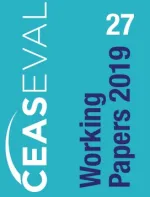Borders and the mobility of migrants in Germany

CEASEVAL Working papers No.27
This country report represents research findings on bordering processes in Germany. It is based on a broad concept of borders and bordering which goes beyond the regulations at state borders and rather refers to the all kinds of exclusionary practices implemented on migrants. Regarding the legal national framework, we observed a two-fold border enforcement since 2015: the reintroduction of stationary border controls at the Bavarian border, and the enforcement of internal bordering processes, notably against migrants who are deemed as “non-deserving” refugee protection. The differentiation of “deserving” and “non-deserving” migrants is based on state norms. Migrants from safe countries of origin, as “non-deserving” migrants, experience far more restrictions and exclusions than other groups of asylum-seeking migrants, such as the limitation of mobility, the ban from the labor market and the enforcement of detention and deportation. These enforcements, which followed a period of opening and flexibilization of borders based on the Schengen Agreement, constituted the strongest transformation of the German asylum law since long. Most institutional actors deem the existing Regulations (Schengen, Dublin) as theoretically good, but practically deficient. The loss of confidence in the regulatory system led to enforced securitization practices at external and internal borders, for example by criminalizing sea rescue operations and by enforcing border control operations in the Mediterranean.
The enforcement of securitization at state borders is not only constituted by enforced border controls, but also by enforced disciplinary measures against persons crossing the border, who have to obey to a detailed, de-individualizing registration procedure and who are subject to police practices which were invented for coping with criminal subjects. Also internal bordering processes were enforced by increasing exclusionary measures and practices against “non-deserving” migrants, for example regarding first reception, housing, or access to labor and education. This is most clearly displayed in the manifold restrictions for migrants from so called safe countries of origin, as well as for those who were detected as migrants engaging in secondary movements on the basis of the Dublin Regulation. For those two groups, there are manifold obstacles towards reception, integration and internal mobility, which were enforced by several new laws and regulations since 2015.
Keywords: border, bordering, Germany, “non-deserving” migrant, securitization